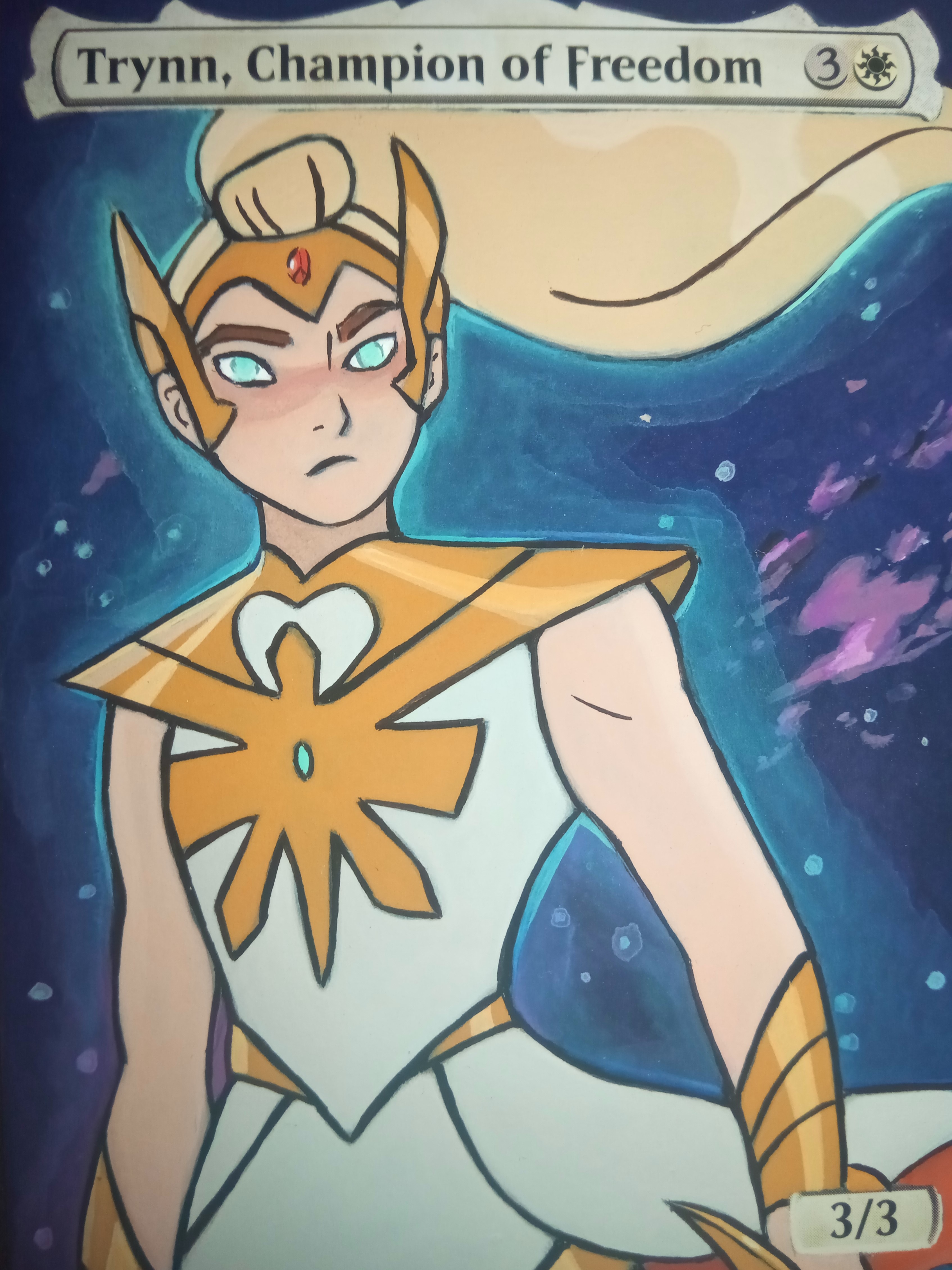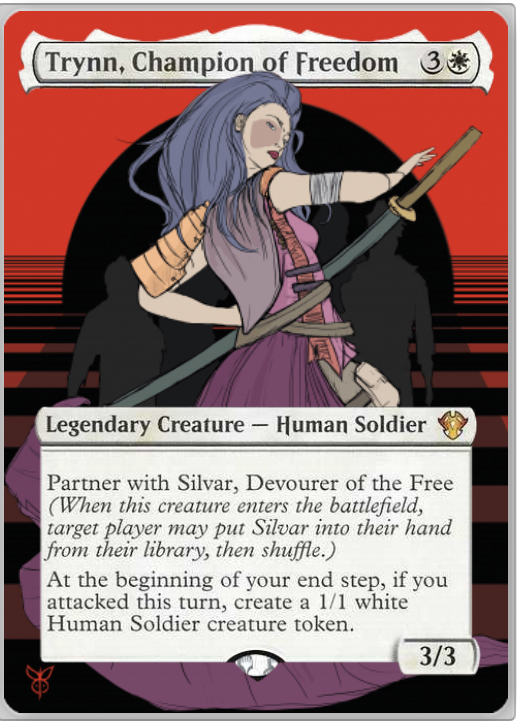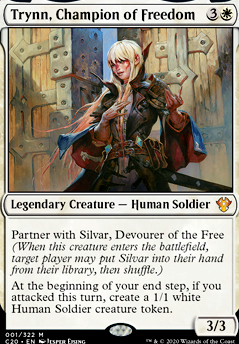
Combos Browse all Suggest
Tokens
Legality
| Format | Legality |
| 1v1 Commander | Legal |
| Archenemy | Legal |
| Canadian Highlander | Legal |
| Casual | Legal |
| Commander / EDH | Legal |
| Commander: Rule 0 | Legal |
| Custom | Legal |
| Duel Commander | Legal |
| Highlander | Legal |
| Legacy | Legal |
| Leviathan | Legal |
| Limited | Legal |
| Oathbreaker | Legal |
| Planechase | Legal |
| Quest Magic | Legal |
| Vanguard | Legal |
| Vintage | Legal |
Trynn, Champion of Freedom
Legendary Creature — Human Soldier
Partner with Silvar, Devourer of the Free (When this creature enters the battlefield, target player may put Silvar into their hand from their library, then shuffle.)
At the beginning of your end step, if you attacked this turn, create a 1/1 white Human Soldier creature token.
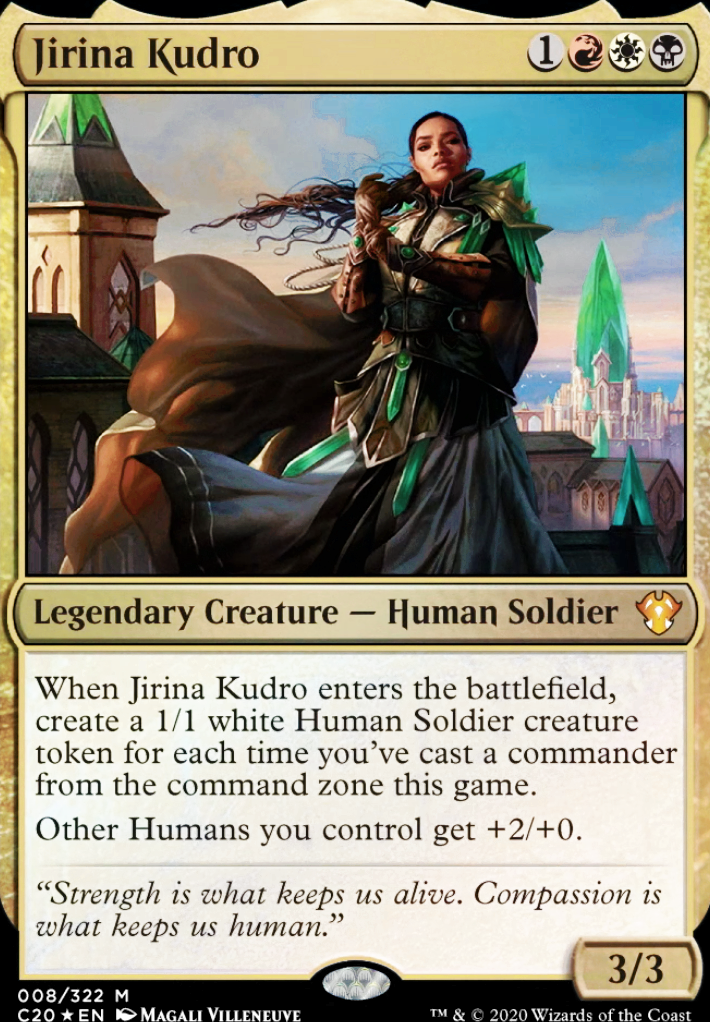

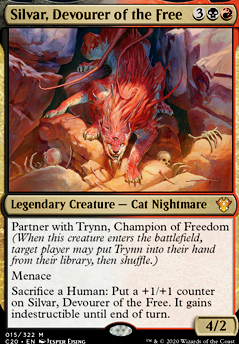


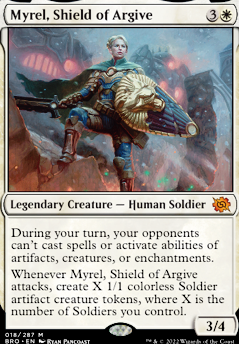
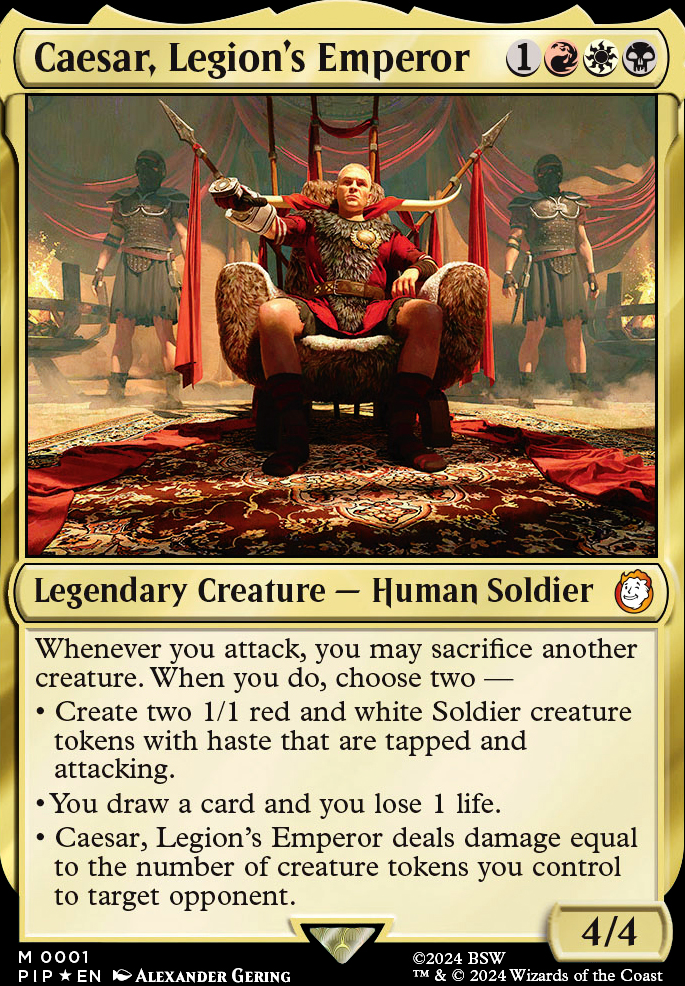
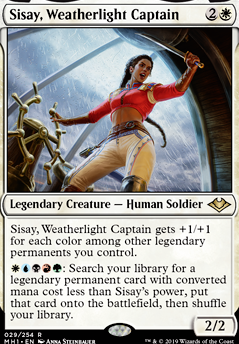

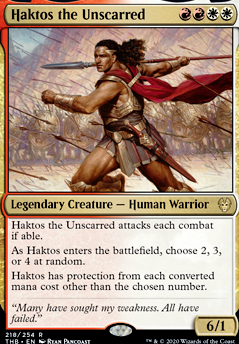
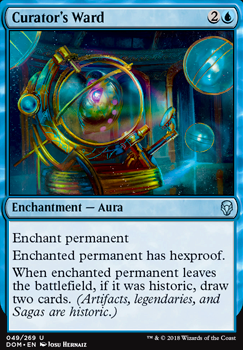

Terranlord on Syntax Help!
1 year ago
I need help usingTrynn, Champion of Freedom as a partner commander with Silvar, Devourer of the Free. I can put them in the decklist, but if I put the CMDR after them the ornothopters come out and site crashes.
The same is true when I load other decks with those commanders BUT one person managed to get their deck to show both as a commander without it crashing.
How do I write the code so it shows the picture for both partner commanders?
Guerric on
 [Primer] Helming the Host of Heaven *Update*
[Primer] Helming the Host of Heaven *Update*
1 year ago
Thanks so much for this! It is incredibly helpful. I am glad to hear the deck is performing better, and seven out of ten is a good rate and consistent with what I've seen. It's also super cool that you got off the combo with The Book of Exalted Deeds and Mutavault. While not the sort of thing that likely happens often it is super powerful when it does! I especially appreciate the insight on Emeria Shepherd since I have it and have pondered putting it in, and it certainly is better than Karmic Guide for only two more. My recent update (which I need to post) cut two five drops for a three and a four drop, so raising it 2 on one card definitely seems worth it. Nykthos, Shrine to Nyx is also one that belongs in the deck- my only copy is in my elf deck and I don't like proxying, but there is no reason not to put that in. Crucible of Worlds with fetches is also a solid choice in any non-green deck. Teferi's Protection is also great and I only don't have it because as with Nykthos, my copy is in a different deck, but that can easily replace Guardian of Faith or Cosmic Intervention.
I do like that this deck plays pretty differently than my other decks and is a true, "fair" aggro deck. Among my other decks three of the more aggressive decks, Scion of the Ur-Dragon, Yuriko, the Tiger's Shadow, and Ezuri, Renegade Leader are much more tool-boxy and tutors are huge. Really only this deck and my Trynn, Champion of Freedom/Silvar, Devourer of the Free deck play a classic aggro game. It's fun to play aggro, be powerful, and be resilient.
Thanks again for all of your playtesting and feedback, it is super appreciated!
Guerric on Deck Archetypes in EDH
1 year ago
Hi all! There's an interesting question I've been pondering lately, and I thought I'd share some of my reflections on it and get input from all of you. In sixty card magic we have deck archetypes, namely aggro, control, midrange, combo, and tempo. In commander obviously things look pretty different, and several years ago on the Command Zone podcast they said that like in limited, there aren't really deck archetypes this way, just different flavors of midrange.
As the format has developed and changed a lot over the years I do think something like these archetypes exists in commander, they're just different. For those familiar with sixty card formats some of the hard and fast rules for those archetypes in sixty card magic do not apply, and there certainly is more fluidity on commander and other unique multiplayer strategies as well (ex. Group Hug). Nonetheless, I think the outline of most of these archetypes is still relevant. Here is how I think it plays out-
1) Aggro- I think something more like classic aggro has only become viable in commander in the past couple of years, but I think it is definitely a thing now. In sixty card magic, most creatures are in the one to three drop range, there is often no focus on card draw, and everything in the deck serves to get a single player to zero as quickly as possible. Obviously in commander we need raw engines, some ramp, and are going to play more powerful cards. That being said, I think strategies built around attacking with high value, low cmc creatures from the early game onwards characterizes aggro in commander. This wasn't viable a few years ago due to the lack of board state protection, and really only token pump decks and creature cheat decks tended to do well. But the printing of many premium white board state protection spells like Flawless Maneuver, Teferi's Protection, and Semester's End has changed up the formula a bit. Attacking low to the ground and early is a keystone of aggro strategies, but so are on attack triggers. We have so many of these now, and they incentivize keeping our force swinging every turn. Commanders like Akiri, Fearless Voyager and Trynn, Champion of Freedom incentivize attacking in order to draw cards, make tokens, or do other things the deck is going to want to do. Unlike sixty card magic, we will need to be able to draw cards, and play some removal and interaction, though we'll play fewer pieces of the latter here than in other decks since they compete with resources to keep up the attack. We also need to play one-sided board wipes wherever we have the option, because we can't afford to lose our own board state. We'll also need a way to get through for damage once our opponents' defenses are up, and as such things that give our creatures menace, landwalk, flying, deathtouch or indestructible are key as they help us keep up the assault. We're also very in favor of a few key pump spells to help us finish out the game like Jazal Goldmane or Coat of Arms.
2) Midrange- In sixty card magic midrange is characterized by playing some of the most powerful cards on every point in the curve, and play more removal than aggro decks. Oftentimes they are characterized as "the growing threat." A classic and famous example was the classic Modern Jund deck that Reid Duke piloted several years ago. One of its touchstones was playing Tarmogoyf on turn 2. The goyfs could attack or block where necessary, but they would grow more unstoppable as the game went on, until they were dropping haymakers like Liliana of the Veil. They would use cards like Dark Confidant to keep their hand full till they could inevitably win. In a way, these sorts of decks mirror something of what we see in all commander decks in that they play removal, draw, and powerful cards. Yet what I think sets them apart is this idea of the growing threat, and that they play more removal than aggro decks. One way in which I think some midrange commanders work is to have abilities that allow them to turn other cards into Tarmogoyf like threats. Ezuri, Claw of Progress and Giada, Font of Hope use +1/+1 counters to turn small evasive threates into significant ones. In this sense, I think a lot of counter decks fit well in the midrange categories. These decks will attack, but they don't have to like aggro decks, and are more willing to conserve resources and work on developing board state where feasible. They often have engines that benefit their board passively from the passage of time, and as such they can play more removal and let their board build itself. They still want to protect their board state, and some of the cards from aggro decks that do this or simply counterspells can help with this, and one-sided board wipes are usually th best kind for midrange decks as well.
3) Control- Control decks in sixty card magic are built on trying to shut down almost everything an opponent is trying to do via counterspells and removal until you can work towards a win con. This obviously is not possible in commander where you can not shut down three other players with just counterspells and removal alone, and isn't always necessary since opponents can also shut down each other. As such, controlling strategies fit into two categories: stax and regular control. With stax pieces that shut off lands and mana rocks, eEDH controlling strategies indeed can effectively shut down three other players, usually finding a way to work through it themselves in order to build towards a win con. In standard EDH, heavy land-based stax like that is frowned upon, but cards that disrupt play in other ways (ex. Blind Obedience as well as counterspells and removal are fair game. These decks are still building towards a win con by slowing opponents down, and will devote far more slots to disruption and removal than aggro and midrange decks. They may win with an infinite combo, a planeswalker, a few premium attacking creatures, or in other ways, but most of the deck is devoted to protecting themselves and disrupting opponents. Controlling decks are more likely to play reciprocal board wipes, and generally benefit from keeping the board clear of threats at most times.
4) Combo- Combo decks also exist along a spectrum in EDH, though this archetype is most similar to sixty card magic. The formula is almost unchanged for cEDH, where most of a deck is devoted to playing and protecting a single combo. Outside of cEDH, it is worth mentioning that infinite combos can be included in almost any archetype in the format as a backup win con when other plans go sideways. What makes it a combo deck is that the entire deck is focused on pulling out one of a variety of sometimes elaborate combos, and these decks are generally geared more towards Johnnies than Spikes. A good example would be combo decks built around Teysa, Orzhov Scion that can put together the Darkest Hour in a variety of ways, as well as play Reveillark + Karmic Guide and/or Sanguine Bond + Exquisite Blood in order to win. These decks play out as trying to put together a combo while fending off opponents with removal and interaction.
5) Tempo- Some might argue that there is no such thing as tempo decks in commander, but it's worth mentioning that they're pretty rare even in sixty card magic across formats. In sixty card magic tempo decks adopt a "disruptive aggro" philosophy, where they slowly chip away at an opponent's life total with small, cheap, evasive creatures, while always holding mana open to protect their board and disrupt threats. While "chipping away" life totals isn't much of a strategy in a multiplayer strategy, I do think there are decks that play out along the lines of this disruptive aggro strategy. As an example, Ranar the Ever-Watchful and Alela, Artful Provocateur can be played this way, where the flying tokens they generate are the main win con, and the rest of the deck is devoted to holding mana open to protect this main game plan and stop others from winning. Unlike in sixty card decks these may win all at once with token pump effects or other affects, but this is the main way.
What do you all think? Do you think there are deck archetypes like this in EDH? Why or why not? What qualifications would you add or take away about them if you do?
Guerric on Has anyone played with or …
2 years ago
This is definitely a Tree of Perdition sort of card for sure. That being said, he could maybe be a value piece in a token/sac deck just for his first ability if you could recur your humans, or just provide some consolation when they die. He maybe could go in Trynn, Champion of Freedom and Silvar, Devourer of the Free, but I'm not sure if he is good enough.
Guerric on
 [Primer] Unleash the Dragon! *Updated*
[Primer] Unleash the Dragon! *Updated*
2 years ago
1) Dragon's Hoard OUT Ceta Sanctuary IN
As much as I love the flavor of hoard, it is generally slow and unreliable card draw, and any artifact-based ramp that costs three mana or more is too much these days, so it's never been great there. Ceta Sanctuary is such a perfect draw spell for this deck. With Scion out it will always draw two cards every turn and discard any one card from our hand, which allows us to filter any dragons we draw into the graveyard where we can get them out more efficiently. Kudos to kookoo for this fabulous suggestion!
2) Scourge of Valkas OUT Lathliss, Dragon Queen IN
Scourge was always good mostly as a Fireball when you could mass reanimate it, and pretty bad in most other situations. If it is on the board and one dragon enters, that's at best doming something for two. In contrast, if Lathliss is out and a dragon enters we get a 5/5 dragon token. What's more to the point, if we mass reanimate Lathliss we'll get tokens for every other dragon, and if we have a haste enabler all of those tokens will be able to attack that turn.
3) Vorosh, the Hunter OUT Scalelord Reckoner IN
Reckoner has always been great, so I'm not sure why I took it out of the original deck. Knowing they'll get reciprocity for removal is always a good incentive for your opponents to leave you alone and try to politic instead. Vorosh was great if you could get the counters, have Scion stick around, and then use him with Skittles the next turn, but this was kind of a slow process with a lot of investment, which can be easily disrupted. Putting six counters on Scion has a way of putting more of a target on him due to the possibility of commander damage alone, so I think reckoner is a better card.
4) Ojutai, Soul of Winter OUT Old Gnawbone IN
Ojutai is a great disruptor and has salvaged a few iffy games for me in the past by freezing down my opponents, but it is in very particular situations that he helps us and in others it's not as good. Gnawbone gets us lots of treasure, and is a great first target for Scion, and can also hoard us resources on the board later in the game. Its just an all-star card that's good in every situation, and I had to put it in.
5) Crucible of Fire OUT Kairi, the Swirling Sky IN
Kairi just has so much utility that she's hard to pass up. She is a third protection target for Scion, which we definitely need, and can also provide great utility on board-wipes. Crucible is good and always better than you expect it to be, but it is the weakest link at this point.
6) Herald's Horn OUT Sakura-Tribe Elder IN
Horn is a great card, but not in this deck. It is best in tribal decks with cheap creatures where you can cast multiple spells a turn at a discount, and draw a card on one and three turns. I'll probably put it in my Trynn, Champion of Freedom and Silvar, Devourer of the Free deck where it will rock the house. Here it only draws a card one in four turns, and we would rather draw other cards than our dragons. As a ramp piece it doesn't help us cast Scion, hard-casting our dragons isn't a focus, and its not likely we'll be casting more than one. Good old Elder gets us a land for two mana, which is where we really need to be on ramp in this deck.
7) Maelstrom Archangel OUT Sylvia Brightspear IN
I've had Sylvia since Battlebond when I pull her from a pack and have always intended to put her in. Three mana to give all our dragons double-strike is a nasty surprise, and cheap enough that we can still activate Scion that turn. The low-end is probably when only Scion is out, but we play her and make Scion into a big dragon for a voltron kill. The high end is we play her when a bunch of dragons are on the board, or put her and Gisela, Blade of Goldnight on the board with Tooth and Nail, and relish our opponents' tears! Maelstrom Archangel is best if we can cast her when a haste enabler is out and immediately put a permanent on the battlefield. She is expensive to cast and a big removal target, and there will be plenty of times we don't have anything good to put on the board with her. I wish she was legendary and could be an angels tribal commander, but Sylvia will be better here.
Guerric on Aggro advice
2 years ago
I am a huge fan of Trynn, Champion of Freedom and Silvar, Devourer of the Free. Because of all the great new board protecting stuff in white you can actually hard-cast cheap good creatures and protect them from board wipes with great cards like Cosmic Intervention, Flawless Maneuver and the like, the token/aristocrats subtheme gives you synergy with black card draw strategies like Morbid Opportunist and white weenie ones like Welcoming Vampire as well as giving you fuel for fun toys like Eldrazi Monument. It's just a lot of fun and so much stronger than I expected (I was trying to make a lower power and more "fair" aggro deck for my playgroup). My list is below if you're curious. I'll probably write a primer for it someday but haven't gotten to that one yet.
Have Yourself a Scooby Snack!
Commander / EDH
SCORE: 1 | 128 VIEWS | IN 1 FOLDER
Guerric on Advertise your Primer!
2 years ago
I've been on a primer writing kick this week (it's been a break from school), so I'm hoping to add my Ezuri, Renegade Leader Elfball primer soon, then my Teysa, Orzhov Scion one. I also have one in the mental works for Trynn, Champion of Freedom and Silvar, Devourer of the Free. I've been playing Ezuri almost since the beginning, I played Elves in modern for awhile, and I often lend the deck to students who are learning the format, so I think that's going to be a good one!
Guerric on State of Mono-Colored Decks in …
2 years ago
Unlife I definitely agree that building properly is key, and it seems that you have quite a bit of experience in mono-colored decks! I play mono-green Ezuri, Renegade Leader and its busted. It was tougher when I've played with white though. I do have to say that white decks are more resilient than they used to be, with Cosmic Intervention and Flawless Maneuver type cards helping you to preserve your board state, which does help when card draw isn't great. One of the big liabilities with the lack of card draw in white used to be that when the board wipe hit you were basically out of the game, since you wouldn't be able to rebuild due to poor draw. And I have to say, I expected my Trynn, Champion of Freedom and Silvar, Devourer of the Free deck to be bad because its creature-based aggro, and those strategies struggled more in the past. But I have found it to be super resilient, and that I have lots of ways to recover, and as a result I've won more games than I should have. I'd still like to see more draw in white though, even if it pushes us in a certain direction.
| Have (2) | zachi , JordanSanFran |
| Want (0) |













